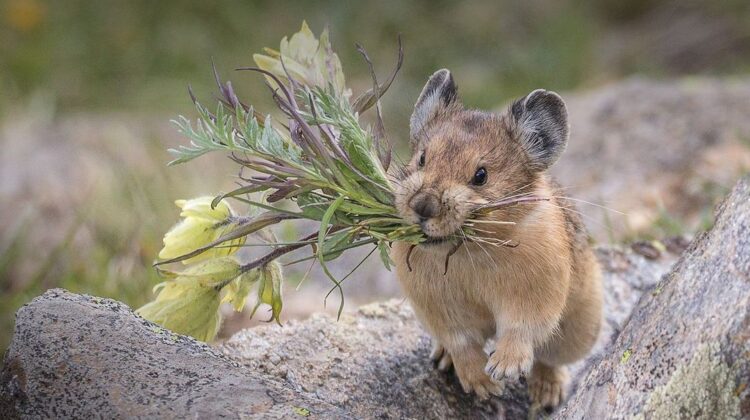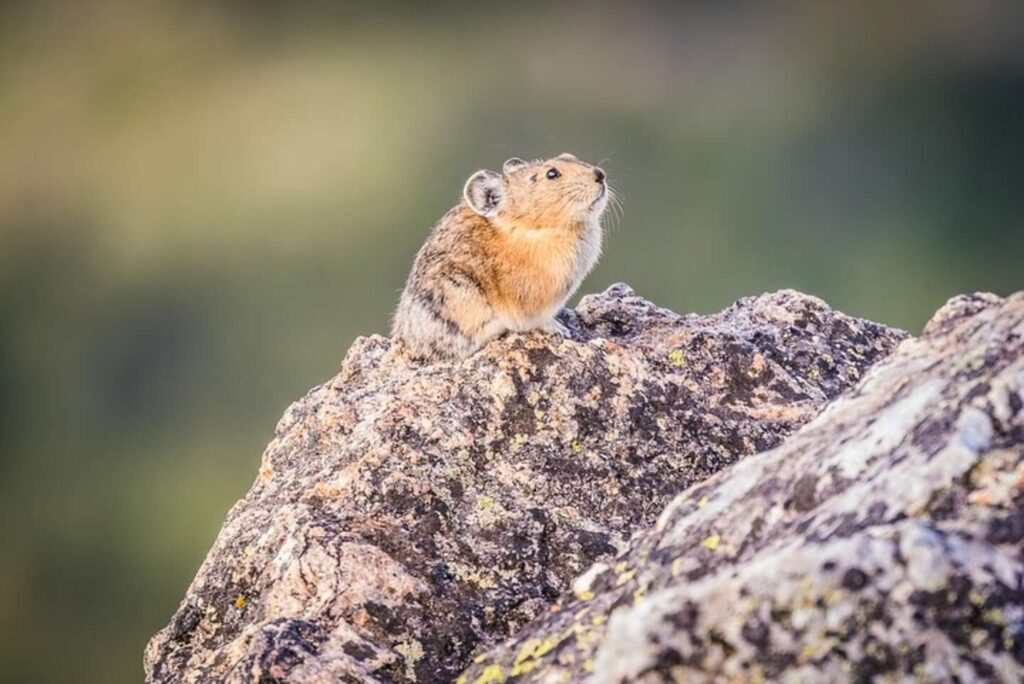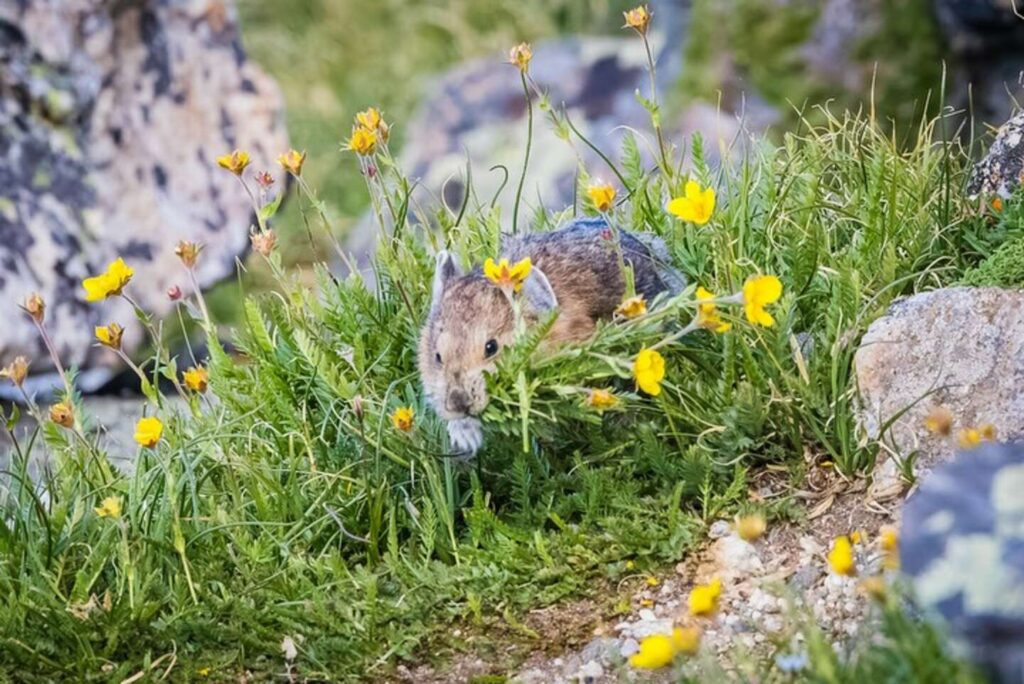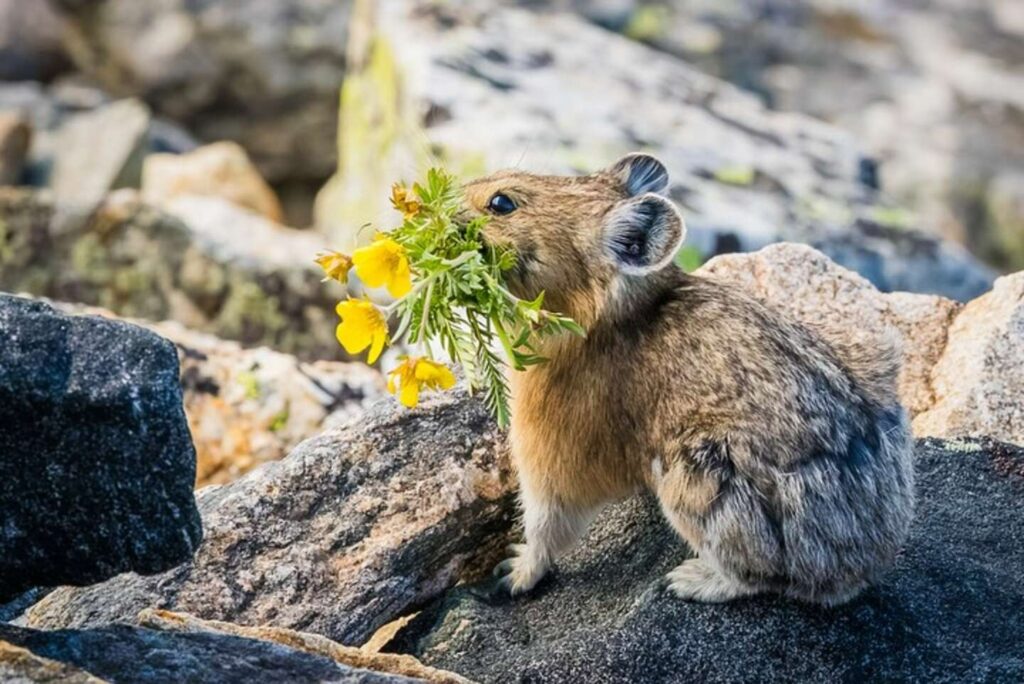
“It was really just being at the right place and right time,” says photographer Charles Haupert, who recently had a unique encounter with one of the animal world’s most adorable florists – the American pika.
Earlier this month, officials from Cedar Breaks National Monument in Utah shared a post highlighting the fascinating behavior of the American pika, a diminutive species related to rabbits. These tiny creatures, primarily found in rocky outcrops at higher altitudes, have a penchant for wildflowers.
But what sets the American pika apart is its exceptional preservation technique. To ensure they have enough food to survive the harsh winter when fresh flowers are scarce, pikas meticulously gather and store colorful bouquets during the summer months. These floral collections, known as ‘haystacks,’ are carefully laid out on rocks to dry in the sun and later stored in their dens.
Capturing this behavior on camera can be challenging due to the pikas’ small size and agility. However, Charles Haupert, while on a hike in the wilderness of Colorado late last month, found himself in the right place at the right time.
He spotted a pika busily hopping about a floral patch among the rocks, gathering flowers with precision. “I’ve seen them collecting flowers before, but never have been quick enough on the draw [with my camera] to get it in action,” Haupert remarked. “They are always on the move.”
This time, Haupert was prepared, and he managed to capture the adorable florist in action. The pika collected as many flowers as its little jaws could carry before setting off down the mountain to hide its floral bounty. Along the way, it paused briefly, allowing Haupert to snap a few more photos before disappearing into the wilderness.
While the encounter lasted only a minute, Haupert considers himself lucky to have had the chance to witness and photograph this unique behavior. “It was really just being at the right place and right time,” he said.
Despite their charming behavior, American pikas face a grim future due to climate change. These animals are adapted to cold, alpine conditions and are extremely sensitive to rising temperatures. Prolonged exposure to temperatures exceeding 77 degrees Fahrenheit can be fatal for them.
A study by the National Park Service warns that, by the end of the century, some pika populations could face extinction. Although they are not currently classified as endangered, efforts are underway to address the threats they face. Encounters like the one Charles Haupert captured serve as a reminder of the importance of protecting these unique and vulnerable creatures.








Leave a Reply